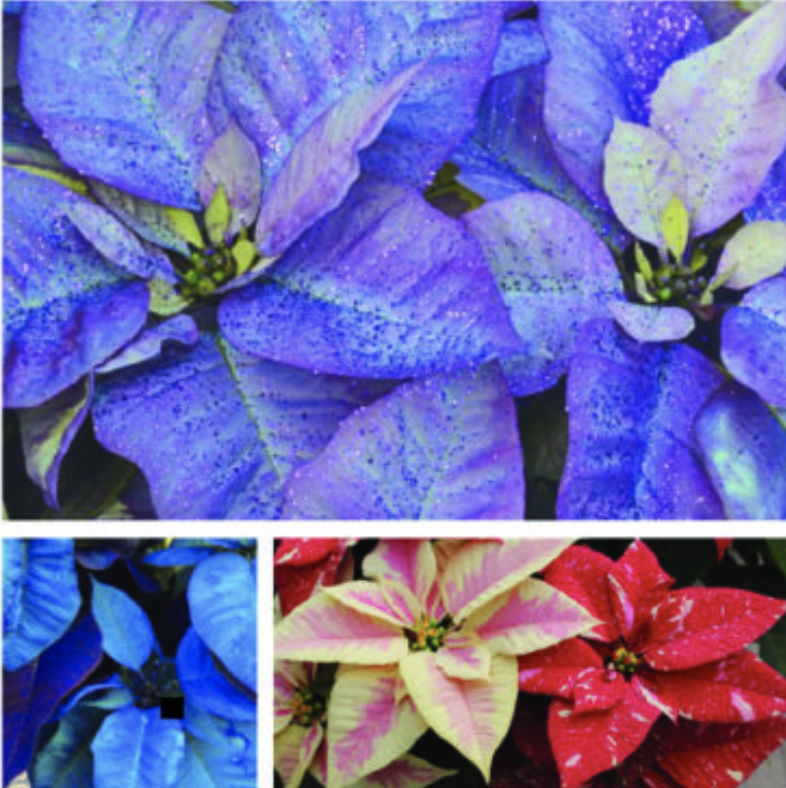Search Posts
Recent Posts
- Rhode Island Weather for May 22, 2025 – Jack Donnelly May 22, 2025
- We Cook! Mill’s Tavern Louisiana style beer braised Short Rib, Grits, Baked Beans, Cornbread May 22, 2025
- RI Veterans: Did you know? 22.05.25 (Medical, Memorial Day, War Dog, events) – John A. Cianci May 22, 2025
- RI Trucking Association calling on Governor and General Assembly to halt truck tolls May 22, 2025
- 8th annual Rhode Island Slow Pitch Softball Hall of Fame: Class of 2025 May 22, 2025
Categories
Subscribe!
Thanks for subscribing! Please check your email for further instructions.

A Greener View: Poinsettias – Jeff Rugg
by Jeff Rugg, contributing writer
Have you seen poinsettias for sale yet? I have. Were they red? Probably. That is because we all know that poinsettias are red, right? Well, not so fast. There are pink, purple, white, spotted, striped and even yellow and orange poinsettias.
Every year, the commercial plant breeders of poinsettias come out with five to 20 new varieties. Most of us don’t notice the differences, but there are some important changes aside from new colors. Poinsettias are not one-size-fits-all plants anymore. There are important considerations for the grower and for the consumer of poinsettias. Poinsettias are native to Mexico and Central America where they grow into 10-foot-tall shrubs.
They are named after the first United States Minister to Mexico Joel Poinsett who introduced the plant to botanists in the U.S. in the 1820s. Fast-forward about 100 years and the Ecke family founds the first poinsettia nursery in California. They popularized poinsettias and produced many new varieties. Fast-forward another 100 years and hundreds of millions of poinsettias are being sold around the world.

In fact, each summer and fall, millions of two-inch-long cuttings are shipped into the U.S. from massive, sterile greenhouses in Nicaragua, Guatemala and Uganda. The cuttings require seven to 10 weeks of growth at specific temperatures and levels of daily sunlight to be ready to sell. Greenhouses across the U.S. differ in their abilities to control the temperature and the length of the day.
Different varieties of red poinsettias are now grown in northern, central and southern greenhouses based on their ability to withstand area temperatures. The newer heat-tolerant varieties are better for consumers in the Southern states.
There are small poinsettias that grow quickly and can be sold in small pots very cheaply. Big-box stores know that most people only buy one plant for the holiday, whether it be a lily at Easter, a chrysanthemum for the fall or a poinsettia for the winter. If the big-box store sells the plant first, it doesn’t matter if it won’t last until the holiday season is over; they already have their money.
Overall, poinsettias do last much longer than they used to. Years ago, the plants lost their leaves within weeks of being brought home. Now, they may still be red next May. Part of this is because breeders are specifically looking for plants that keep their true flowers longer. The colorful leaves are called bracts and are just leaves. At the end of each branch of colorful bracts is a cluster of tiny male and female flowers and nectar glands called a cyathium. The longer the cyathium lasts, the longer the bracts will stay on the plant. A key to buying poinsettias is to see if the cyathium is still fresh and not withered and falling off.
Poinsettia breeders and growers are also looking for plants with strong root systems and branches that reach upward and not outward so they don’t break off when sold in plastic sleeves. With all that said, color is still the most important factor in growing and selling poinsettias. Breeders are getting plants with darker green leaves that make the red, pink and white bracts look brighter. Also, look for the very pretty variety called Tapestry with green and white leaves and red bracts.
As for the other colors, the white bracts are getting whiter compared to the creamy white of the past. The salmon pinks are becoming more pure pink. The purples are getting more vivid. For those who are willing to think outside the box a bit, the new yellow and orange poinsettia bracts look very nice as autumn decorations.
The best place to find new and better poinsettias is your local florist and/or greenhouse grower. They will have more colors; bigger, stronger plants than the big-box stores; and they will have healthier plants that didn’t get exposed to cold or stay wrapped up in plastic sleeves until all the bottom leaves fell off.
___
To read more columns on gardening by Jeff, go to: https://rinewstoday.com/?s=jeff+rugg

Email questions to Jeff Rugg at [email protected]. To find out more about Jeff Rugg and read features by other Creators Syndicate writers and cartoonists, visit the Creators Syndicate website at www.creators.com. COPYRIGHT 2020 JEFF RUGG – DISTRIBUTED BY CREATORS SYNDICATE
